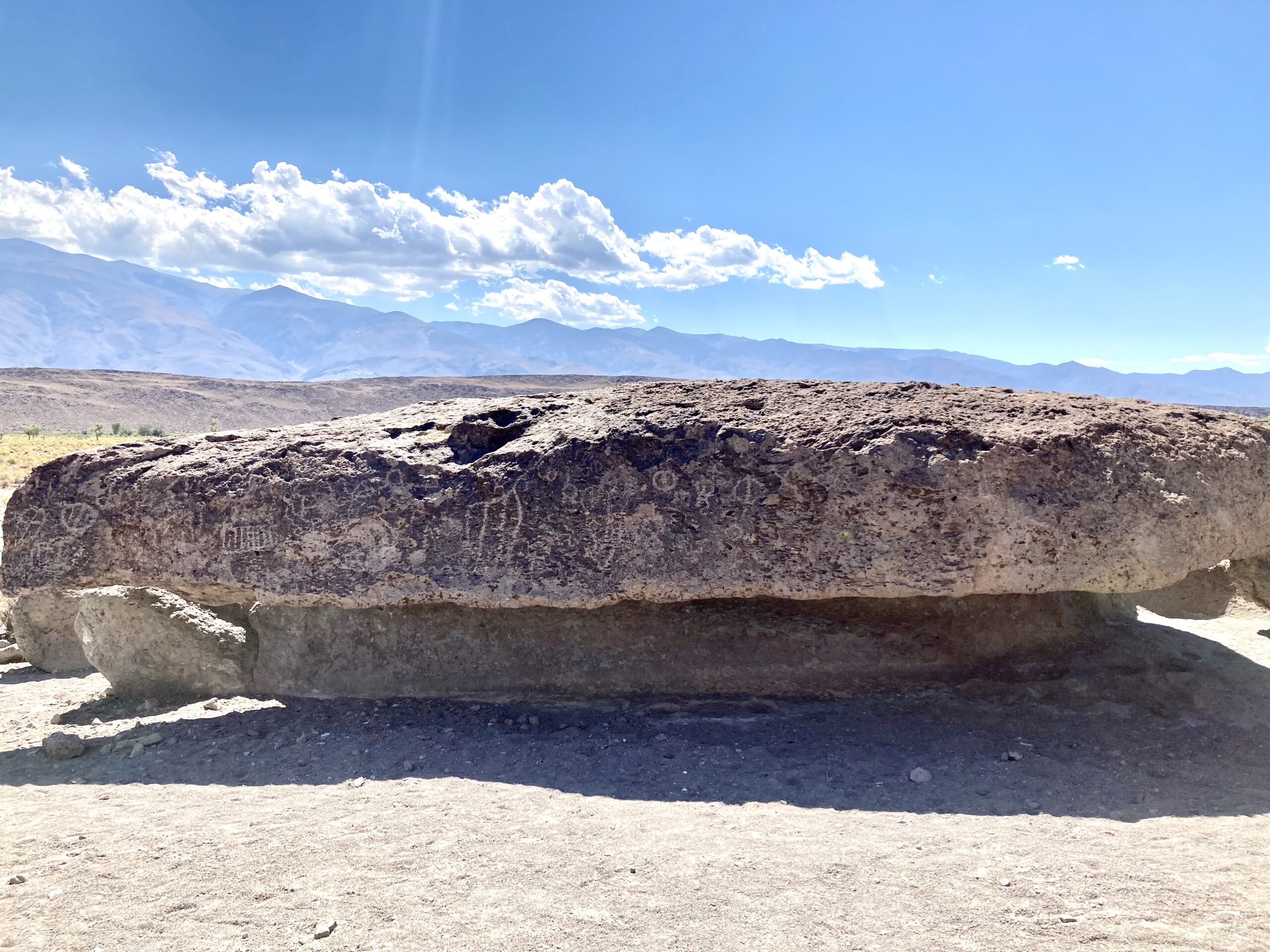Glaciers and prehistoric super volcanoes are not the only things that have left behind stories etched in the landscape.
A bit south of Mammoth Lakes, on the volcanic tablelands created when the Long Valley Caldera erupted and blanketed the region with welded tuff, the ancestors of the Paiute-Shoshone carved rich panels of petroglyphs.
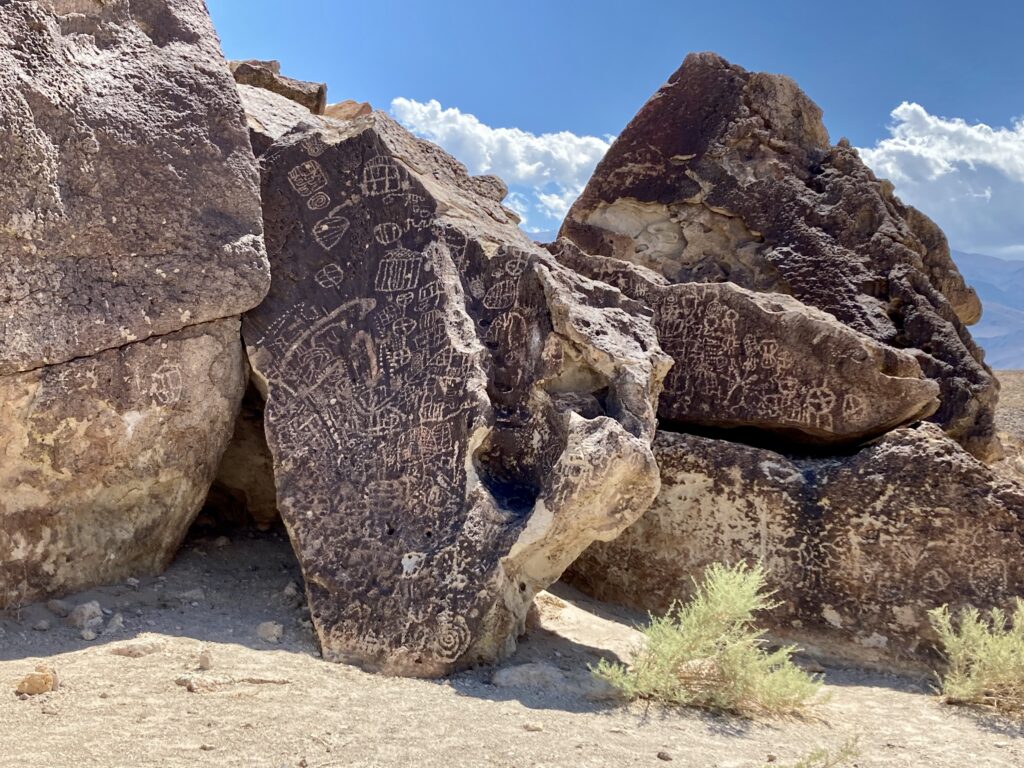

Today these petroglyphs are scattered across the desert landscape of the table lands. It’s hard to imagine the Owens River valley as the fertile landscape supporting a rich culture, but some of the panels are believed to be more than 5,000 years old— carved long before the Los Angeles department of Water and Power bought all the water in the Owens River and took it south away from the valley.
It’s equally hard to imagine the boom years at the end of the nineteenth and early twentieth centuries when a railroad spur connected rich silver and mineral mining communities that are today ghost towns or museums.
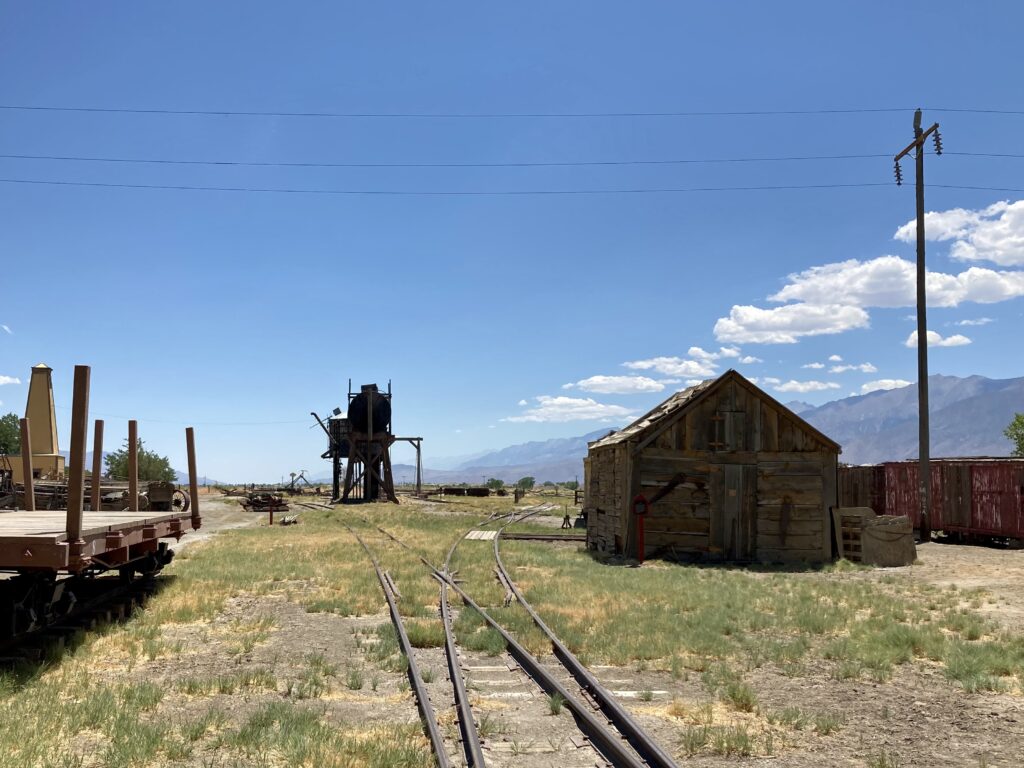
A bit north of Mammoth Lakes, tantalizing silver ore found high above Tioga pass in what’s now Yosemite National Park inspired the Great Sierra Mining Company to set up a camp overlooking Gaylor lakes at 11,000 feet and sink shafts straight down into the mountains.
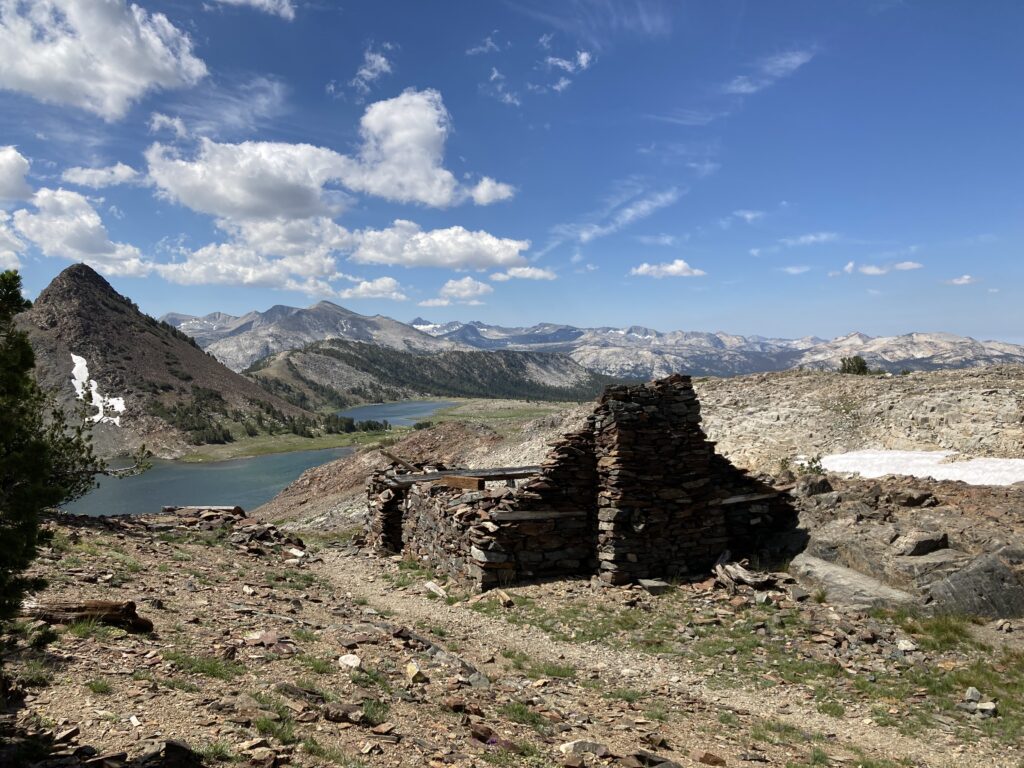
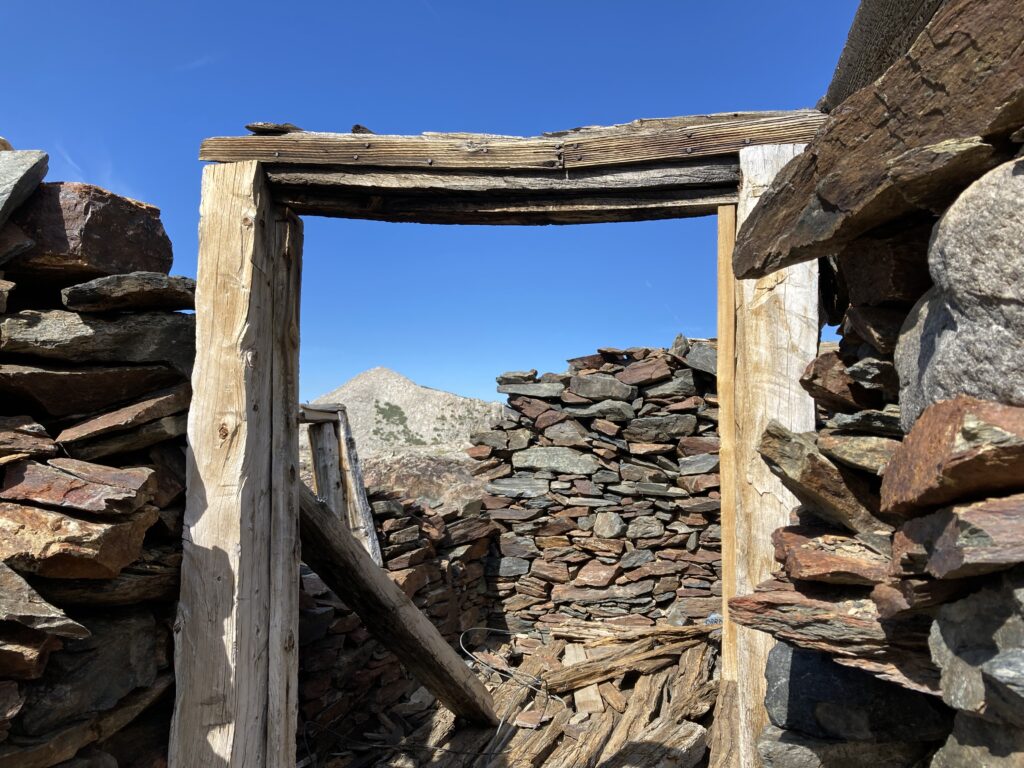
They didn’t strike the lode from the top, and working at 11,000 feet is difficult even in the summer. Snow rangers from Yosemite National Park have been measuring snow depths in Tioga Pass since the 1920s, and on average 78 inches of snow fall in nearby Dana Meadows every year. I always wonder— did the men toiling in this harsh landscape also see it as beautiful?
The Great Sierra Mining Company was nothing if not persistent: moving downhill a few thousand feet to Bennetsville, they tried again to locate the vein by blasting a tunnel some 500 feet in from the side. Despite hauling several tons of equipment over mountain passes and building a 50 mile road to transport supplies and ore, no ore was ever extracted before the mine was abandoned.
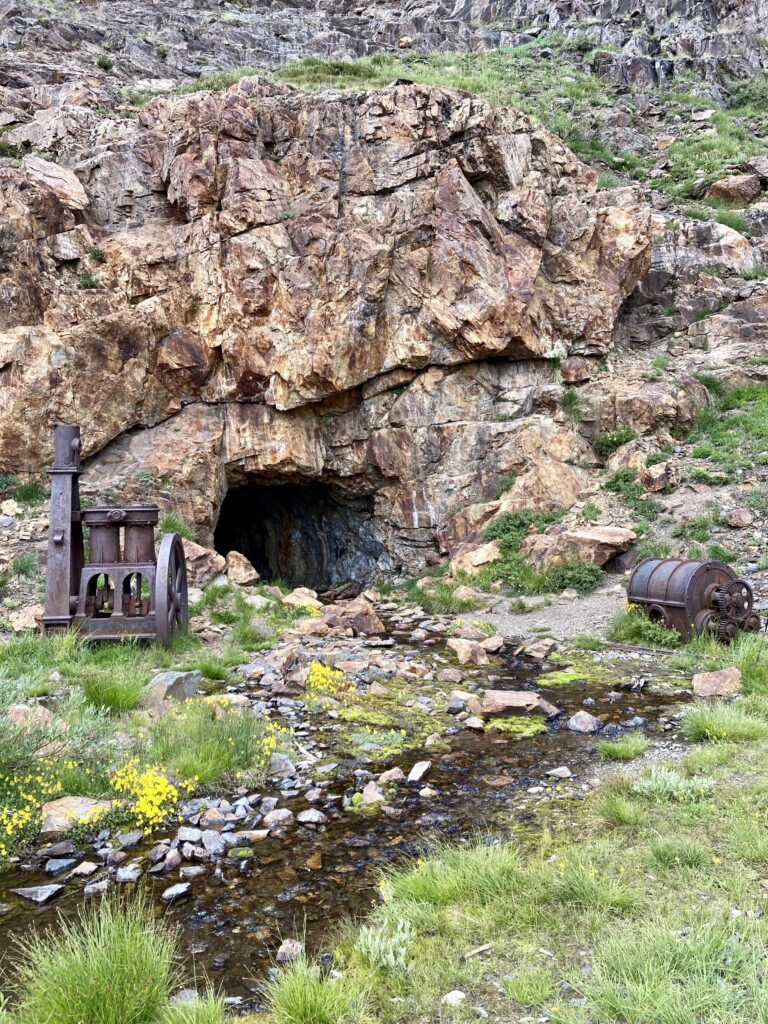
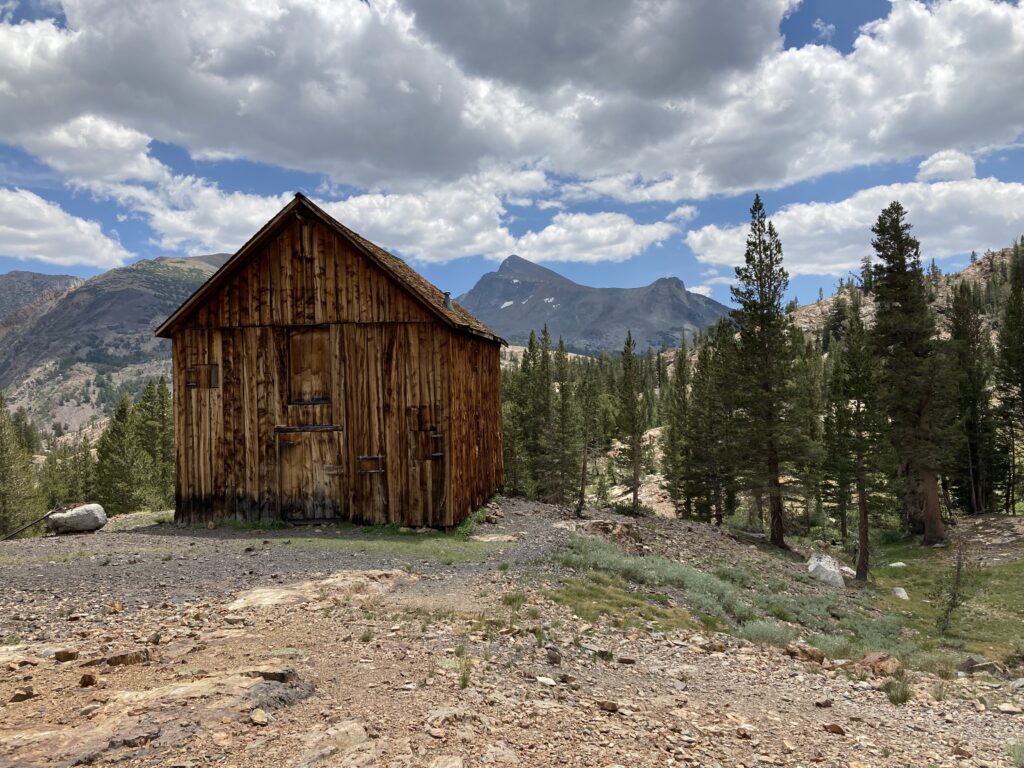
I’m glad the Yosemite high country was spared the ravages of a successful mining operation. Today a tailings pile, enigmatic pieces of heavy machinery, a pair of wooden buildings, and a mine tunnel seeping water are all that remain.

